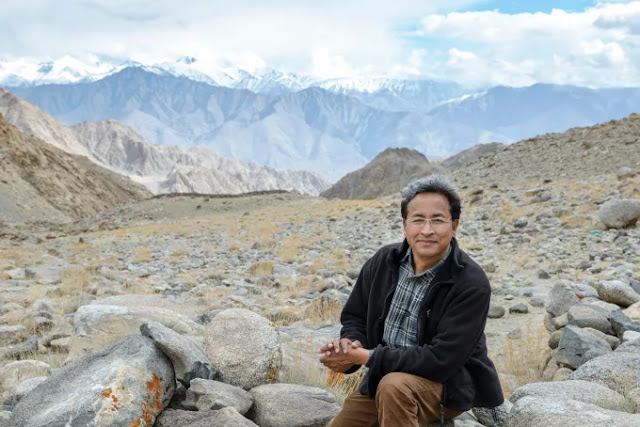As the winter progresses, these ice stupas grow in size, storing precious water that would otherwise melt away and disappear into the barren landscape.
 |
| Artificial glaciers offer a promising solution to water scarcity. Image: Collected |
In regions plagued by water scarcity, artificial glaciers have emerged as a promising solution to mitigate the adverse effects of climate change and ensure a sustainable water supply. These ingenious structures, also known as ice stupas or cones, are essentially man-made ice reservoirs that store winter water for use during the dry summer months.
The concept of artificial glaciers is rooted in a simple yet effective principle: diverting water from streams during the winter months and channeling it into structures that allow it to freeze in conical shapes.
In India, to reduce water crisis, authority gathers artificial glaciers in their dessert surfaces. Later, you will see more.
The benefits of artificial glaciers are manifold. They serve as a reliable source of water for irrigation, ensuring that farmers can cultivate their crops even during periods of severe drought. This, in turn, contributes to food security and economic stability in water-scarce regions.
Moreover, artificial glaciers also help to regulate the flow of water in rivers, preventing flash floods and ensuring a steady supply for domestic and industrial purposes. They can also play a role in mitigating the impacts of climate change by reducing the risk of droughts and floods.
One of the most notable examples of artificial glaciers is the project initiated by Sonam Wangchuk, an Indian engineer and activist, in the Ladakh region of India. Wangchuk's efforts have led to the construction of numerous ice stupas, providing a lifeline for farmers and communities in this arid region.
The success of artificial glaciers in Ladakh has inspired other communities around the world to explore their potential. Pilot projects are underway in countries such as Nepal, Pakistan, and Bhutan, demonstrating the adaptability of this technology to diverse climatic conditions.
While artificial glaciers offer a promising solution to water scarcity, it is important to acknowledge the challenges and limitations associated with their implementation. The construction and maintenance of ice stupas require significant labor and resources, and their effectiveness can vary depending on local conditions, such as temperature, altitude, and snowpack.
Despite these challenges, artificial glaciers represent a beacon of hope in regions grappling with water scarcity. As the world faces the pressing challenges of climate change and population growth, artificial glaciers offer a sustainable and innovative solution to ensure a secure water future for generations to come.